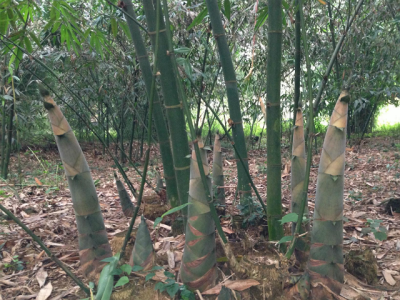Why Bamboo Grows So Fast?
Understanding Why Bamboo Grows So Fast
Bamboo, a remarkable member of the grass family, is celebrated for its exceptional growth speed. This rapid growth can be attributed to several unique biological traits and strong environmental adaptability.
Understanding why bamboo grows so fast involves exploring its structural advantages, physiological adaptability, and growth cycles.
Advantages of Thin and Tall Bamboo Stems

Bamboo’s slender stems, filled with compartments known as “nodes,” are connected by tough cell walls. This unique structure significantly contributes to its impressive growth rate.
Rapid Cell Division and Expansion

Bamboo exhibits rapid cell division, especially during the growing season. This process involves the multiplication of cells at the stem’s tip and their subsequent elongation. During optimal conditions, bamboo can grow several centimeters per day. This accelerated cell activity enables bamboo to reach substantial heights quickly, making it one of the fastest-growing plants.
Benefits of Hollow Structures
The internal structure of bamboo features hollow segments that play a critical role in its growth. These hollow spaces enhance the efficiency of water and nutrient transport throughout the plant. The lightweight yet sturdy construction of bamboo stems reduces the need for extensive support structures, allowing bamboo to grow tall and resilient while using fewer resources.
Strong Physiological Adaptability and Environmental Flexibility

Bamboo’s ability to thrive in various environmental conditions further accelerates its growth. Its adaptability is a key factor in its rapid development.
Preference for Warm, Moist Climates
Bamboo thrives in warm and humid climates, where it can access ample moisture and nutrients. These conditions promote vigorous growth and support the plant’s overall health. Bamboo’s growth is often optimized in tropical and subtropical regions, where the combination of warmth and humidity creates ideal conditions for its development.
Versatility in Soil Conditions
Bamboo’s resilience extends to its ability to grow in various soil types, including those that are nutrient-poor. This adaptability allows bamboo to flourish in diverse geographical regions, from rainforests to temperate zones. The plant’s extensive root system helps it access nutrients from the soil efficiently, contributing to its robust growth.
Short Yet Efficient Growth Cycles

Bamboo’s growth cycles are notably short compared to many other plants. Some bamboo species can reach significant heights within a single year, demonstrating their rapid development.
Seasonal Growth Spurts
Bamboo undergoes pronounced growth spurts during favorable seasons. These spurts are particularly noticeable during the rainy season when bamboo benefits from increased water availability.
During these periods, bamboo stems can grow several centimeters daily, rapidly reaching their full height.
Dependence on Stem Growth
Unlike many trees that accumulate wood over time, bamboo’s growth is primarily driven by the elongation of its stems. This characteristic allows bamboo to grow upwards quickly without the need for extensive wood accumulation. The focus on stem elongation rather than wood production contributes to bamboo’s rapid vertical growth.
Diverse Reproductive Strategies

Bamboo employs various reproductive strategies to expand its reach and form dense, thriving forests. These strategies enable bamboo to proliferate effectively in suitable environments.
Expansion via Underground Rhizomes
Bamboo spreads rapidly through underground rhizomes, which are horizontal root systems that extend outwards from the main plant. These rhizomes generate new shoots, leading to the formation of dense bamboo groves. This method of propagation allows bamboo to cover large areas quickly and establish extensive root networks.
Above-Ground Root System
In addition to underground rhizomes, some bamboo species also utilize above-ground roots to spread. These roots help the plant extend its growth range horizontally, further establishing its presence in various ecosystems. The ability to spread both underground and above ground enables bamboo to create stable and expansive forested areas.
Conclusion
In conclusion, bamboo grows so fast due to its advantageous stem structure, strong physiological adaptability, efficient growth cycles, and diverse reproductive strategies. These factors not only make bamboo a vital component of many ecosystems but also offer valuable resources and ecological benefits.
Recognizing why bamboo grows so fast highlights its importance as a sustainable and versatile plant, underscoring its role in promoting bamboo life and environmental sustainability.
